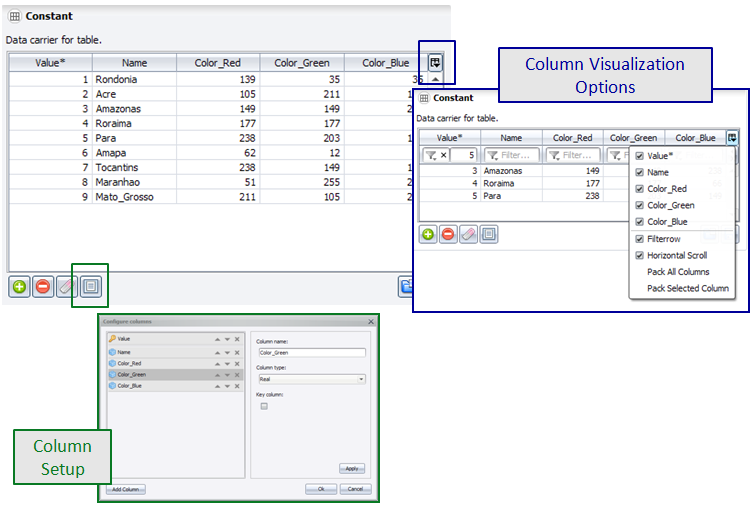This is an old revision of the document!
Table Type
A table is a collection of tuples, where each tuple may be formed by several keys and values. The set of keys must be unique for each tuple.
The set of all elements at the same position in all tuples defines a column. All columns must have a unique name. The names must follow the general name convention in Dinamica EGO, they must start with a “_” or a letter and must be formed by letters, numbers and underscores. Blanks in names are automatically replaced by “_” (underscore).
Keys and values can be represented using double precision floating point numbers, allowing the definition of integral and fractional values, or strings.
GUI Editor

EGO Script
Tables are sequences of elements enclosed by [ ]. The keys/values are represented by real values or strings. The first line of the sequence specifies the column names. Column names suffixed by “*” represent keys.
[ "From*", "To*", "Rate", 1, 2, 0.4, 1, 4, 0.2, 2, 7, 0.5, 4, 8, 0.2 ]
The type of each columns is inferred inspecting the column elements. Elements representing strings must be surrounded by double quotes '“'.
[ "Categories*", "Name", "Color_Red", "Color_Green", "Color_Blue", 1, "soy", 20, 45, 125, 2, "rice", 20, 100, 125, 7, "coffee", 200, 45, 125, 12, "sugar_cane", 75, 45, 123, 34, "bean", 20, 45, 57, ]
Empty tables must provide the column types explicitly.
[ "From*#real", "To*#real", "Variable_Name*#string", "Upper_Range*#real", "Weight_Coefficient#real" ]